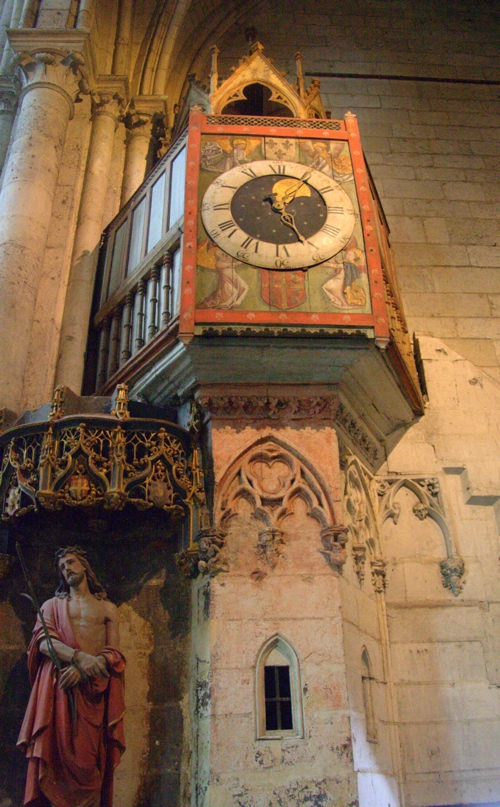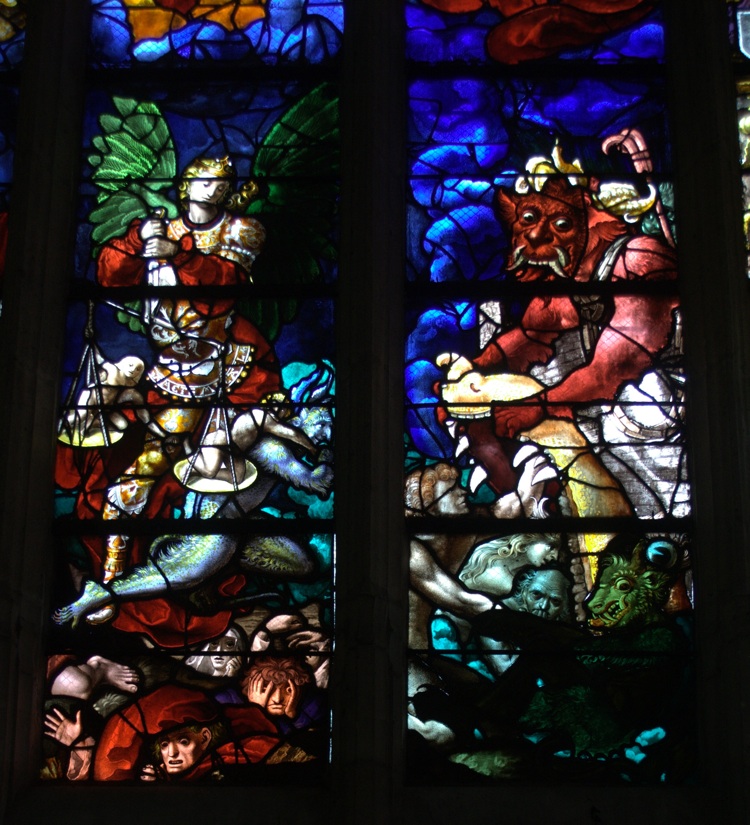Beauvais, France (Wikipedia)
Lister did not mention Beauvais in his memoirs or pocketbook, but his travelling companion Philip Skippon described it as they travelled back to England from Paris. Skippon stated that on 2 April 1666:
. . . three leagues further [we lodged] in Beauvais, a large town, but the houses low and built of wood.
The royal manufacture here employs 400 or 500 men in weaving tapestry, having several looms in long chambers, and painters are invited hither, to draw the pictures that are to be woven. We observed those that weave, have the picture they work just underneath the tapestry they are weaving.
The cathedral in this city is not finished. The choir is built like those in England, very high and handsome, both within and without.
A large piazza in this town.
The ordinary women in these parts, have an odd head dress . . . a kind of rowl behind their heads . . . wires covered with linnen, that go on each side. . .
Skippon, Journey, 2 April 1666
The Beauvais tapestry manufactory is still extant, and there is now a museum to celebrate its artistic and economic contributions to France. It was second to important to the Gobelins Factory in Paris. However, whereas the royal Gobelins manufacture executed tapestries for the royal residences and for ambassadorial gifts, Beauvais was always a private enterprise though it was started under the initiative of French finance minister Jean Baptiste Colbert. One can see more examples of Beauvais tapestries from the Getty Museum.
Due to inherent architectural flaws, St. Peter’s Cathedral in Beauvais still remains unfinished. It is one of the 100 most endangered sites in the World Heritage Fund. St Peter’s is home to a collection of remarkable medieval stained glass, including a renowned rose window.



